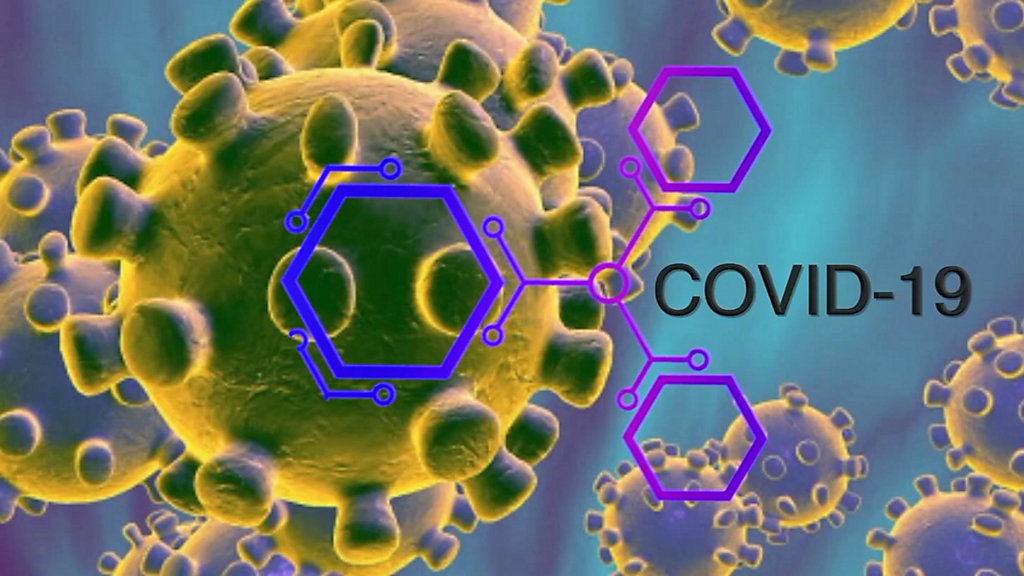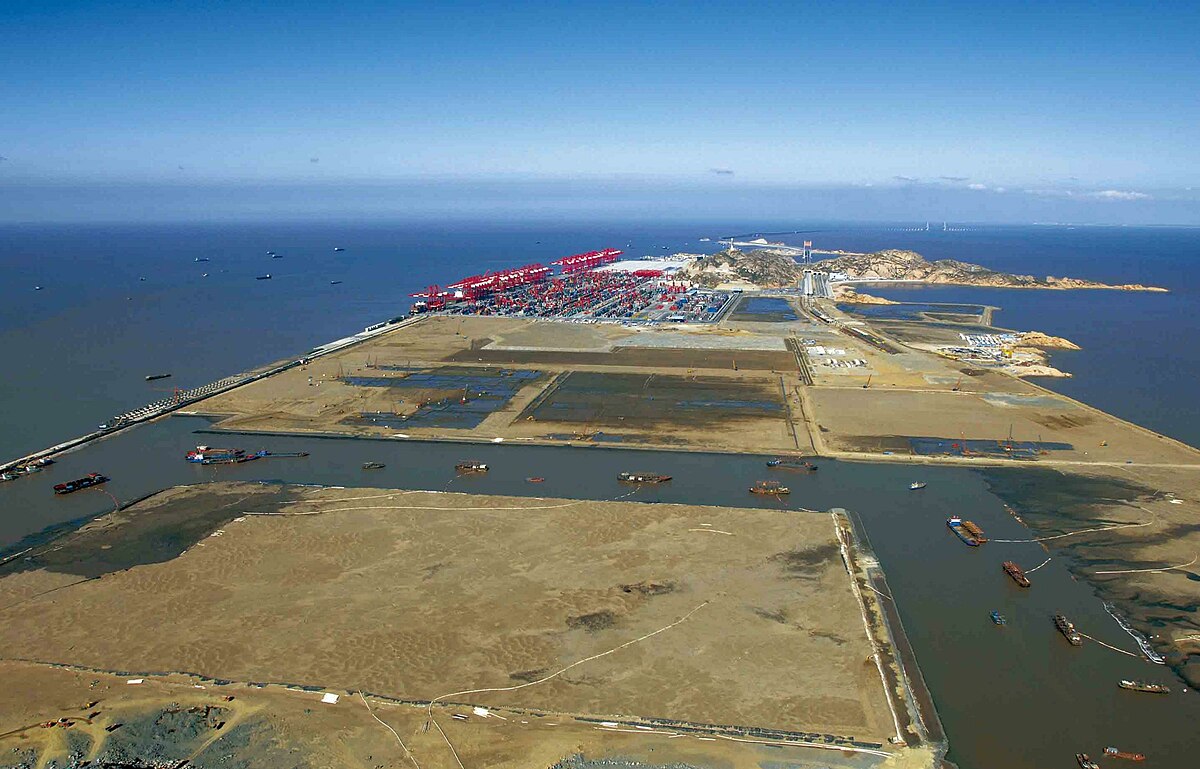"When we start a process as destructive to the economy as a full closure, there must be a clear exit strategy, with an array of possible scenarios depending on events. Any step must be aimed at reaching a clear endgame that presages a new, long-term routine." -- Ran Balicer
Lock downs and The Invisible Enemy
The problem with lock-downs is how to come out of them. And here testing is the key. Virus testing will be key to lock down exit strategies.
At the moment the corona virus is like John Wyndham's short story "The Invisible Monster" when invisible creatures run riot in a rural landscape until a scientist comes up with a way of making them visible, and hence enabling them to be dealt with.
We have no way of knowing how far the corona virus has run though the population, and who now has immunity as a result of fighting off the infection, especially as we know it can be very mild. It is the invisible monster in our midst.
Take these words from John Le Fondre's statement:
"Most Islanders will need to contract the virus at some stage over the next few months."
"That is how we build immunity"
"There is no other choice."
But how do we know who has immunity and could therefore be released back into the community?
Epidemiologist David Heymann, head of the WHO's Scientific and Technical Advisory Group for Infectious Hazards. This is his outline for an exit strategy:
"Once lock down has blunted the first wave of the outbreak, he says, the idea is to consider unlocking certain sectors of the economy slowly, all the while measuring the virus's response to the loosening of restrictions. If infections rise precipitously, health systems would have to jump on them to avoid a resurgence of the disease. Before taking any measures, he says, a risk assessment would have to be made. If, say, offices are going to reopen, how much virus-swapping is likely to take place on the buses and trains and around the water cooler? And will that activity prompt a second spike in cases?"
"An essential element of such a plan, he says, is a surveillance system that gives health officials an accurate view of how many people are infected at any one time. (That much is clear from the rise of COVID-19 infections in Amazon warehouses.)"
"Prolific testing is key. It's not enough to know how many people have COVID-19 in a particular city or state; health officials need to know what percentage of the population is carrying the virus, and how they're distributed among cities and counties."
Immunity Certificates and Testing
Germany's strategy could hold the key:
"German researchers plan to introduce corona virus ‘immunity certificates’ to facilitate a proper transition into post-lockdown life."
"The antibodies will indicate that the test participants have had the virus, have healed and are thereby ready to re-enter society and the workforce. The researchers plan to test 100,000 members of the public at a time, issuing documentation to those who have overcome the virus. "
"The researchers will use the information to determine how to properly end the county’s lockdown, including re-opening schools and allowing mass gatherings."
“Those who are immune can then be given a vaccination certificate that would, for example, allow them to be exempt from any (lockdown-related) restrictions on their work,” said Gerard Krause, the epidemiologist leading the project.
"The test will give researchers a better idea of how many people have contracted the virus, with indications in Germany and elsewhere that large proportions of the population may have contracted it without knowing."
Issues with Testing
With the time lag of five days on testing, we are, as James Filleul notes, "flying blind". The key, as the UK government has now acknowledged, and shown by South Korea, is the WHO advice: test, test, test. Guernsey will have its testing facility open soon, they have the kit, and it will deliver results around 6 hours, which is enough to put in place the second part of a decent strategy: contact tracing.
Contract tracing is of little or no use if you have a 5 day delay. And yet as Singapore has shown, as South Korea has shown, and as Guernsey is doing - contact tracing is key to control. Those countries are making the contact tracing public - to alert people to the possibility they may have been in a location where the infected person was over the last day or so. South Korea even has detectives doing the work!
It must be public to work, as those countries demonstrate. There is no evidence of any transparent and thereby effective contact tracing in Jersey.
So we need two things: good local testing, with rapid results, and good open contact tracing. You can see from Worldometer statistics that it works. South Korea is keeping a lid on new infections, and they rarely rise above a hundred a day. But unless you test, you cannot tell where you are.
To build confidence, the Jersey government should outline the ETA for bringing in testing, and outline procedures for good contact tracing. I would very much like to see an announcement on that.
The Need for A Plan
"The next weeks and maybe months will be hard. None of us really know precisely what lies ahead, but I firmly believe in the strength of our Island Community spirit which will pull us through."
We cannot just rely on "community spirit". We don't know precisely what lies ahead, but we can plan better to see what does lie ahead. We need a strategy and a timeline for:
The Need for A Plan
"The next weeks and maybe months will be hard. None of us really know precisely what lies ahead, but I firmly believe in the strength of our Island Community spirit which will pull us through."
We cannot just rely on "community spirit". We don't know precisely what lies ahead, but we can plan better to see what does lie ahead. We need a strategy and a timeline for:
- Local and timely testing
- Open and transparent contact tracing
- Immunity certificates for those who are now clear and can go out and about to help restore the economy.
It is like the difference between the Carpathia and the Titanic. Neither new what lay ahead, but the Titanic only had ill-equipped lookouts who had even lost their binoculars. The Carpathia, just as much as risk as she steamed at speed to attempt rescue, had many lookouts, well placed all about. He had a clearly worked out strategy to navigate troubled waters.
The ship of state needs a Captain who is like Captain Roston of the Carpathia not Captain Smith of the Titanic. I believe John Le Fondre can do that, but he needs to be more decisive in outlining an exit strategy, and how it will be planned.
I hope he and the Council of Ministers will prove my confidence in them right. I know it is difficult, but they must do better still.
I hope he and the Council of Ministers will prove my confidence in them right. I know it is difficult, but they must do better still.
Otherwise, we may founder on an iceberg and our community spirit won't be much use at all.
https://www.newsweek.com/amid-coronavirus-experts-question-when-its-safe-go-back-work-lockdown-had-no-exit-strategy-1494342
https://www.telegraph.co.uk/news/2020/03/29/germany-will-issue-coronavirus-antibody-certificates-allow-quarantined/
https://www.haaretz.com/world-news/.premium-coronavirus-lockdown-expert-1.8703537
https://www.newsweek.com/amid-coronavirus-experts-question-when-its-safe-go-back-work-lockdown-had-no-exit-strategy-1494342
https://www.telegraph.co.uk/news/2020/03/29/germany-will-issue-coronavirus-antibody-certificates-allow-quarantined/
https://www.haaretz.com/world-news/.premium-coronavirus-lockdown-expert-1.8703537




























































